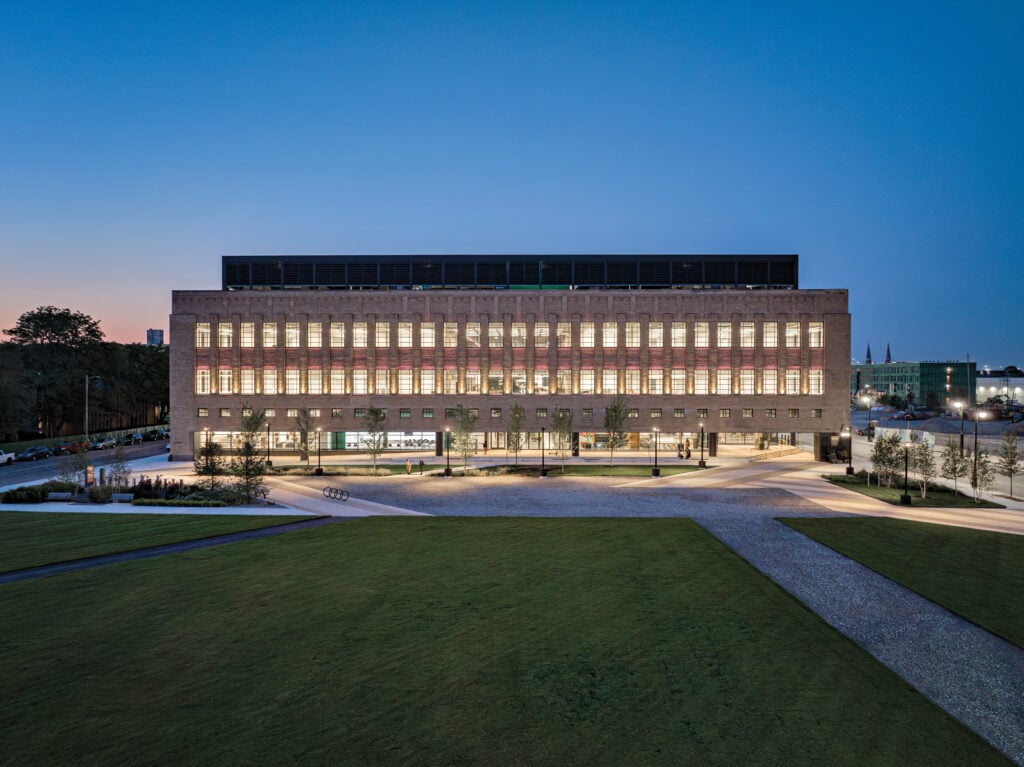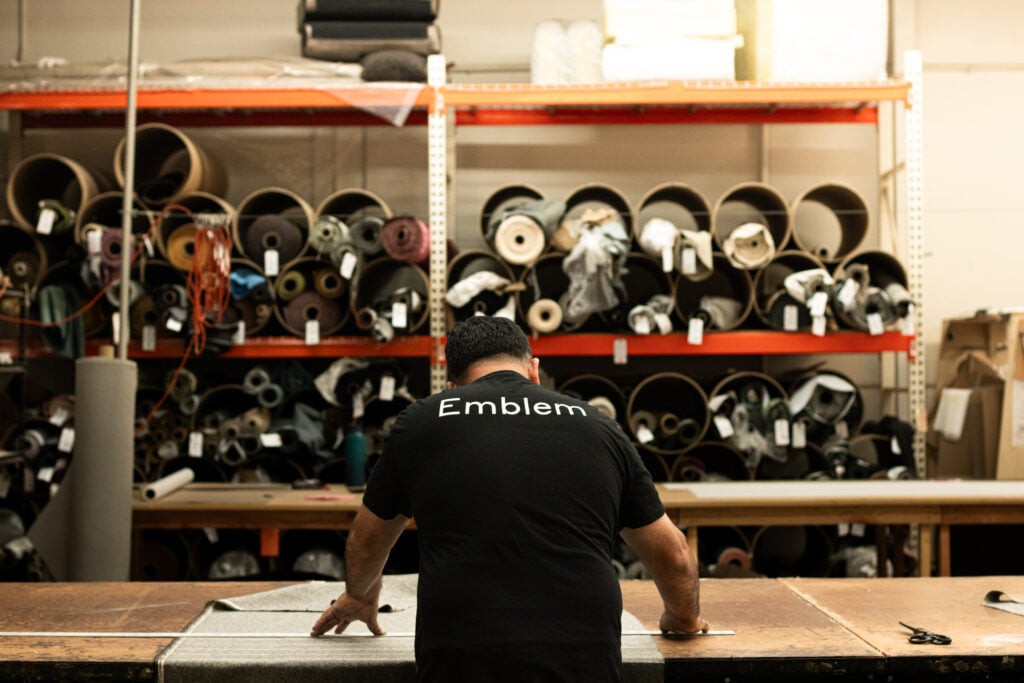
November 10, 2021
Two Companies Offer Next-Generation Solutions for Circular Workplaces
In 2018, 9.6 million tons of furniture and furnishings ended up in U.S. landfills, according to the U.S. Environmental Protection Agency (EPA), and a good portion of that waste likely came from offices. Most workplaces are renovated every few years and the stuff inside, whether it has worn out or simply “uglied,” goes into the trash. Not only is this an environmental calamity, but it is also a wasted opportunity, according to a new class of entrepreneurs who are addressing the full life cycle of the materials and products that make up offices. Their expertise and technological solutions help companies close the loop.
SENSITIVE SOURCING
Brooklyn’s Tri-Lox design and fabrication studio is bringing new life to discarded materials like timber, saving them from the landfill and providing them to the designers of some of New York City’s ambitious cultural touchstones. Launched by childhood friends Alexander Bender and Ellis Isenberg, Tri-Lox cut its teeth working with Big Reuse (formerly Build It Green! NYC) and other nonprofits before word of mouth—and an impressive portfolio—led to commissions for Shake Shack, retailer rag & bone, a wildflower-fringed rooftop for Vice’s Williamsburg HQ, and the Howard Gilman Foundation’s wood-paneled office space. “Everything that we do at Tri-Lox is in service of promoting forest health,” says Bender. The company wants to educate designers that the over-sourcing of any single material—for example, the white oak interiors clogging your Instagram feed—creates a ripple effect on the ecosystem. “We realized that foresters and architects have little to no dialogue,” Isenberg says. “We’re operating as an intermediary between the design and the conservation communities, to give each the tools to understand how to best situate in the industry.” —Laura Feinstein

ASSET EXCHANGE
Garry Cooper, cofounder, CEO, and president of Chicago-based tech start-up Rheaply, was working toward a PhD in neuroscience at Northwestern University when he discovered silos within university departments—one department might need equipment that another department might be in the process of discarding, yet they had no way of connecting and exchanging that equipment. “It turns out that at the largest organizations, no one really knows where everything is,” he says. “Rheaply is helping organizations understand what they currently own, and whether they’re using it or not using it.” The company’s Asset Exchange Manager (AxM) records all assets owned by each of its clients—from furniture to technology to building materials—to ensure that the organization isn’t sending things to the landfill unnecessarily. “We then connect all our clients to each other and to their local communities. So, if an organization doesn’t want a piece of furniture or a building material anymore, they can donate, sell, or rent those to charities, high schools, other businesses, and their peers through Rheaply.” In the past five years, Rheaply has helped divert over 15 metric tons of waste, and counts the U.S. Air Force, Google, AbbVie, Exelon, and MIT among its clients. —Avinash Rajagopal
Would you like to comment on this article? Send your thoughts to: [email protected]
Latest
Viewpoints
How Can We Design Buildings to Heal, Not Harm?
Jason McLennan—regenerative design pioneer and chief sustainability officer at Perkins&Will—on creating buildings that restore, replenish, and revive the natural world.
Products
Behind the Fine Art and Science of Glazing
Architects today are thinking beyond the curtain wall, using glass to deliver high energy performance and better comfort in a variety of buildings.
Profiles
Inside Three SoCal Design Workshops Where Craft and Sustainability Meet
With a vertically integrated approach, RAD furniture, Cerno, and Emblem are making design more durable, adaptable, and resource conscious.





